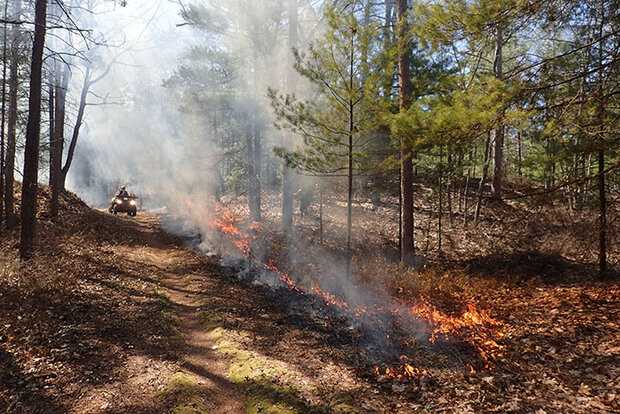New analysis of smoke from a controlled burn in northern Michigan

The fire line of a 2019 prescribed burn in Sleeping Bear Dunes National Lakeshore, Michigan. Credit: National Park Service

The fire line of a 2019 prescribed burn in Sleeping Bear Dunes National Lakeshore, Michigan. Credit: National Park Service
The most common forest fires in the north-central region of the United States are prescribed burns, which are less commonly studied than wildfires. Prescribed burns provide a controlled environment to both remove dry vegetation that could contribute fuel to dangerous wildfires and to study atmospheric emissions.
A recent study, funded in part by the Climate Program Office’s Atmospheric Chemistry, Carbon Cycle and Climate (AC4) Program, conducted a prescribed burn in Northern Michigan and analyzed the chemistry of the resulting smoke. Researchers from the University of Michigan and Aerodyne Research, Inc., including AC4-funded scientist Scott Herndon, used the Aerodyne Mobile Laboratory, which has a suite of air quality instruments to sample gases and particles in the air after the fire.
Read more at the link below.